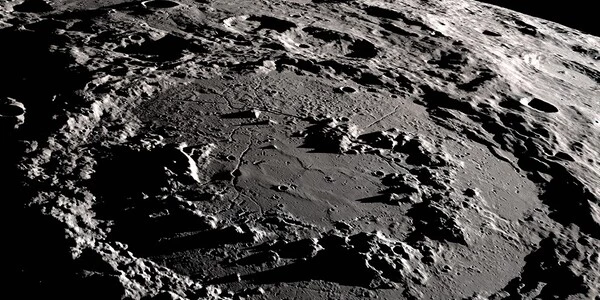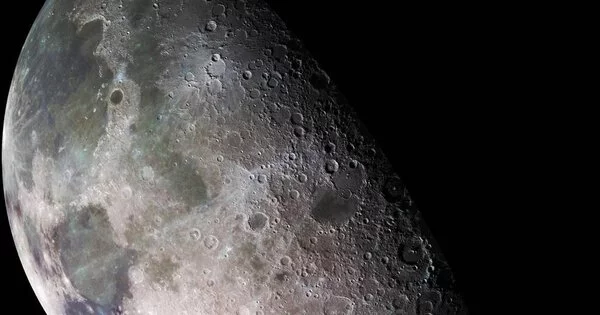The current scientific theory holds that our Moon was formed by a catastrophic giant impact. Earth was a very different place 4.5 billion years ago, shortly after the planets in our solar system formed, glowing red with rivers and seas of lava. The solar system was still littered with formation debris. Earth and another small planetary body orbited the Sun in the same region of our solar system for millions of years. The orbit of the small planetary body crossed Earth’s path, and the two collided, shattering the impactor.
A sophisticated analysis of a rock sample collected from the Moon during the Apollo 17 mission revealed new details about the Moon’s complex cooling and evolutionary history. The diffusion patterns preserved in the mineral grains were consistent with a rapid cooling history at high temperatures lasting no more than 20 million years. The discovery contradicts previous estimates of a cooling duration of 100 million years and supports initial rapid cooling of magmas within the lunar crust.
A sophisticated analysis of a rock sample collected from the Moon during the Apollo 17 mission revealed new details about the Moon’s complex cooling and evolutionary history. The findings were published today in Nature Communications by researchers at the University of Hawai’i at Manoa.
Previous reports indicate that the minerals in the Apollo 17 sample were chemically homogeneous. Surprisingly, we discovered chemical variations within olivine and plagioclase crystals. These heterogeneities allow us to use numerical models to constrain the earliest, high-temperature cooling histories of these minerals.
William Nelson
Apollo 17 astronauts collected the rock sample troctolite 76535 from the Moon’s surface in 1972, and it remains one of the most scientifically valuable samples of the Moon due to its pristine nature. Further, the rock type is widespread on the Moon and likely contains important clues to understanding lunar formation.
The study’s lead author, William Nelson, an Earth Sciences graduate student at the University of Hawaii at Manoa’s School of Ocean and Earth Science and Technology (SOEST), and co-authors used a specialized electron microprobe to conduct high-resolution analysis of troctolite 76535.
“Previous reports indicate that the minerals in the Apollo 17 sample were chemically homogeneous,” Nelson stated. “Surprisingly, we discovered chemical variations within olivine and plagioclase crystals. These heterogeneities allow us to use numerical models to constrain the earliest, high-temperature cooling histories of these minerals.”

SOEST researchers used the UH High-Performance Computing facilities, Mana, to consider the effects of a variety of computer-simulated cooling paths — well over 5 million chemical diffusion models. “The simulations revealed that these heterogeneities could only survive a relatively short period of time at high temperatures,” said Nelson.
The diffusion patterns preserved in the mineral grains and observed with the microprobe were consistent with a rapid cooling history at high temperatures of no more than 20 million years. The discovery contradicts previous estimates of a cooling duration of 100 million years and supports initial rapid cooling of magmas within the lunar crust.
“This is altering our understanding of how an important suite of lunar rocks formed,” Nelson said. To reconcile high-temperature cooling rates with the generally accepted view of how these rocks formed, the research team proposed that this rock type may be formed by a process known as reactive infiltration, in which a melt interacts with rock, changing its chemical and physical makeup.
The study also shows the importance of re-examining previously analyzed samples with modern techniques, as well as how quickly new data can reshape our understanding of planetary evolution. The research team is currently investigating how quickly phosphorus can diffuse in olivine crystals to better understand the observed chemical heterogeneity. They are also looking for similar heterogeneities in other Apollo samples.
When a Mars-sized object collided with Earth 4.5 billion years ago, it created our moon. This collision hurled clouds of debris into space, where they clumped together to form the moon. Craters on the moon were formed by erupting volcanoes and massive asteroid collisions, giving the moon its current appearance. The moon is more than just a pretty night sky object. It has a significant impact on our way of life on Earth. Life on Earth may not have evolved if the moon did not exist.
Tides are caused by the moon’s gravitational pull. Plants and animals in tidal areas spend some of their time in water and some of their time out of water. Scientists think that tidal areas were crucial for the evolution of animals and plants that live on land.





